In 2000, an amateur archaeologist using a borrowed metal detector discovered a trove of coins in a field in England. Nearby, he discovered another artifact that appeared to be a rusty old bucket. Only it was not.
That “rust old bucket” turned out to be a 2000-year-old Roman helmet that had become fragile and encrusted after years under the soil. Now cleaned and restored – with a couple of replicas made – the “Hallaton Helmet,” as it is called, is a beauty to behold.
The Discovery of the Hallaton Helmet
Ken Wallace was a retired schoolteacher in 2000 who kept busy and occupied by joining the Hallaton Fieldwork Group, amateur archaeologists searching the area around Hallaton, Leicestershire. On a hillside, Wallace discovered shards of ancient Roman pottery.
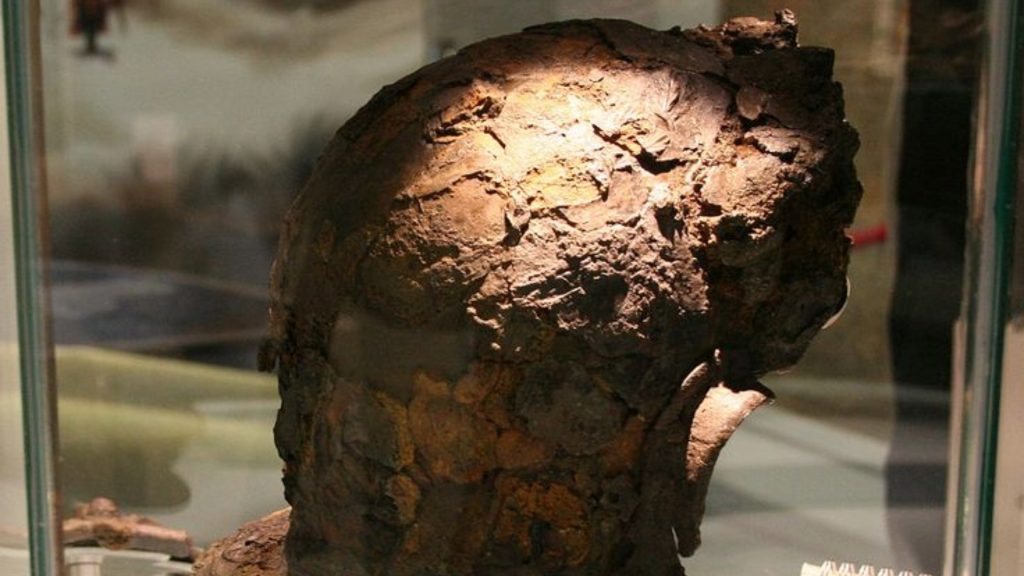
Curious to see if there were more artifacts beneath the earth, Wallace borrowed a friend’s metal detector and returned to the location. He was delighted to find more than 200 coins. There was another object in the ground as well, one that Wallace believed to be a rusty bucket, but it was too fragile to easily dig up.
The University of Leicester Archaeological Services
Upon closer inspection, Wallace thought he could make out an ear in the silver of the artifact. He reported his discovery to the University of Leicester Archaeological Services, or ULAS. They planned a dig to take place in the spring of 2003 after they realized what the object truly was … an ancient Roman helmet.
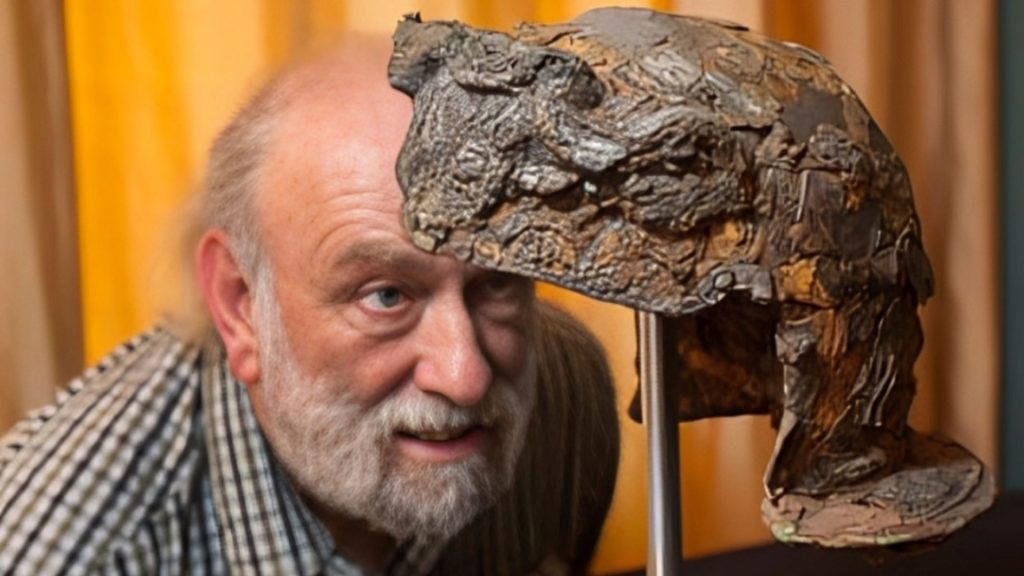
The artifact, they confirmed, was too delicate to be pulled from the ground. Instead, the archaeologists removed it along with the cube of soil surrounding it. It was delivered to experts at London’s British Museum.
A Large-Scale Excavation
After the discovery of the coins and the Hallaton Helmet, archaeologists from the University of Leicester Archaeological Services conducted a large-scale excavation of the site. They uncovered many more artifacts which are collectively known as the Hallaton Hoard.

Source: hallatonfwg.wordpress.com
In total, more than 5,000 Roman and Iron Age coins were discovered, making it the largest trove of Iron Age coins ever discovered in Britain. A silver bowl and silver ingots were also found. The archaeologists unearthed thousands of animal bones and even located the remains of a defensive ditch that had been dug around the site.
Nearly a Decade of Painstaking Restoration Work
British Museum conservator Marilyn Hockey, together with her colleagues Fleur Sheaman and Dygu Camurcoglu, undertook the painstaking process of cleaning, reassembling, and preserving the Hallaton Helmet.
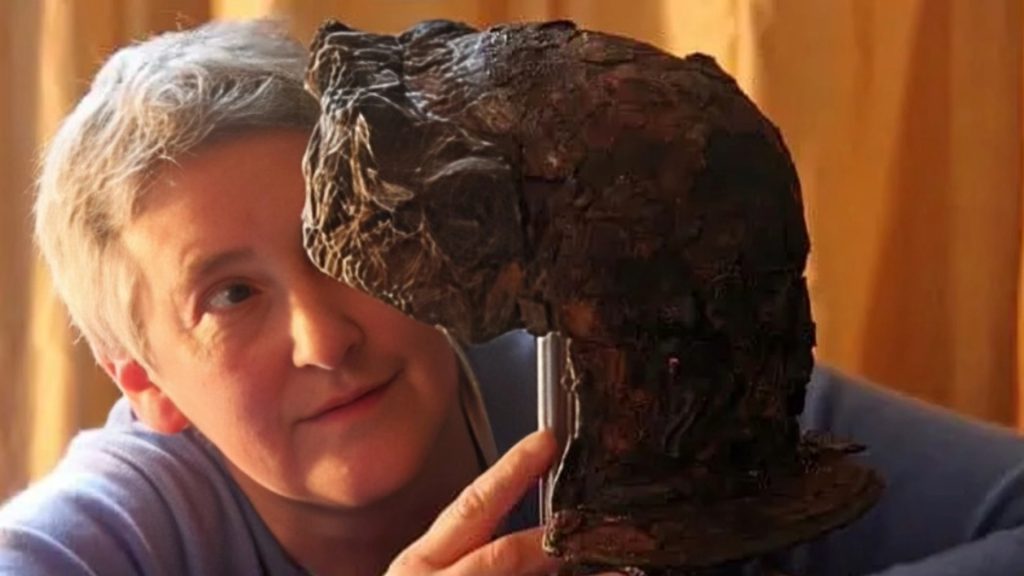
The helmet was in rough shape. The metal had severely corroded, and the helmet had broken into thousands of pieces. Some of the pieces were tiny … smaller than an eraser at the end of a pencil. It took nine years to reassemble the Hallaton Helmet.
An Artifact from Rome’s Occupation of Britain
The Hallaton Helmet is more than two thousand years old. It was once worn by a Roman cavalry officer during the period when the Roman Empire occupied Britain. In the year 43 AD, the Romans, under Emperor Claudius, invaded the British Isles.
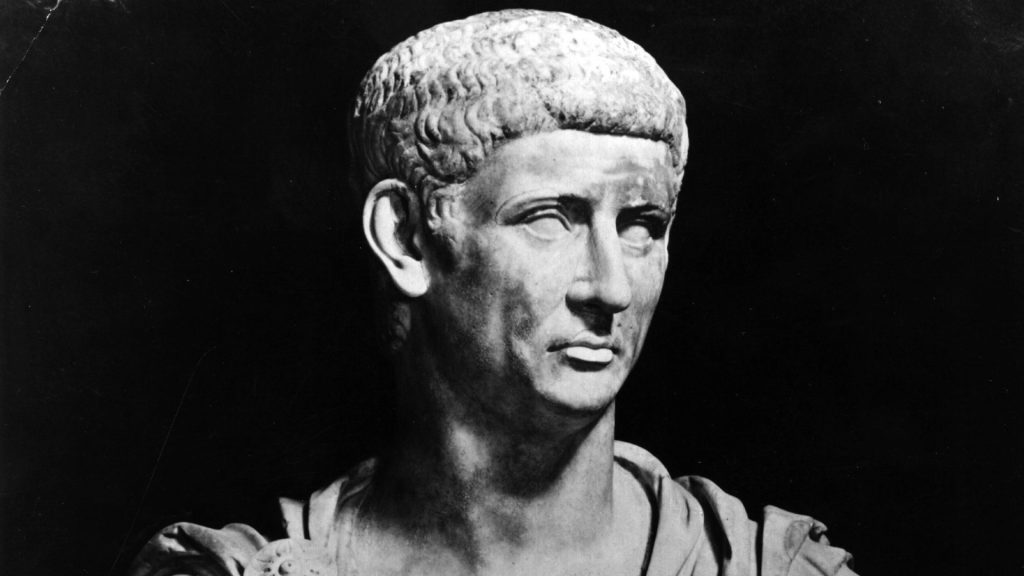
The Romans occupied Britain until the early part of the 5th century. During that time, the Romans left an indelible mark on life in the British Isles. The language, laws, architecture, infrastructure, commerce, and art all reflected the Roman influence.
Restoring This Piece of History
For the people of Leicester, the discovery of the ancient Roman helmet and the accompanying trove of coins marked a vital piece of their local history. The Leicester County Council embarked on an aggressive fundraising campaign which collected more than £1 million, thanks in part to the Art Fund and Heritage Lottery Fund’s generous donation.
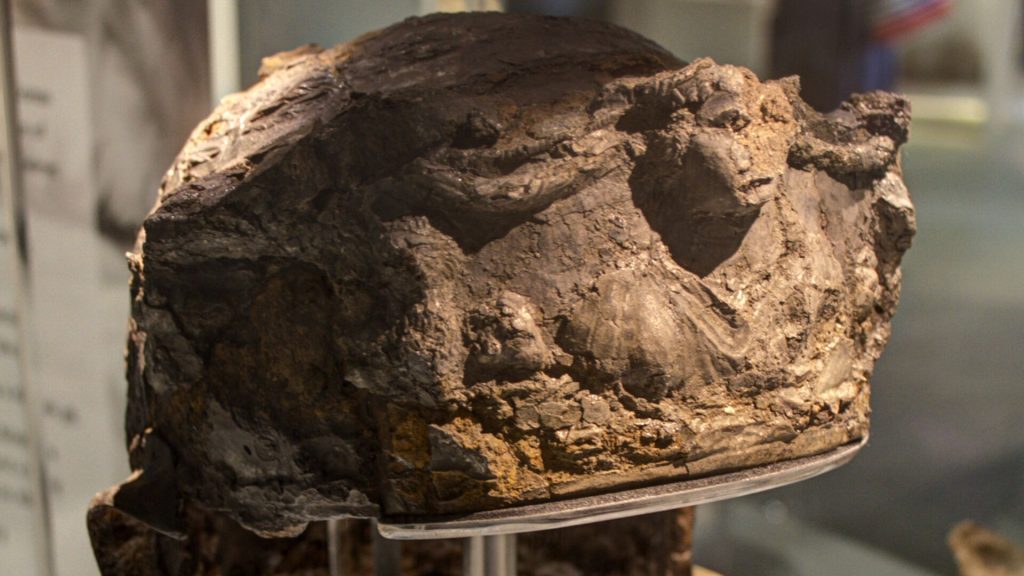
The funds were used to buy the coins and the helmet and to pay for the conservation efforts of the Hallaton Helmet. As per the Treasure Act, both Ken Wallace and the landowner were granted awards of £150,000.
Back in Leicestershire County
Now, more than two decades after it was discovered, the Hallaton Helmet is back in Leicestershire County. The artifact is now on display at the Harborough Museum, now far from where Ken Wallace discovered it.

Christine Radford, a member of the Leicestershire County cabinet, stated, “We are excited to have the Hallaton Helmet back with us at Harborough Museum for people to view. This display would not be possible without the amazing conservation and reconstruction work that has been undertaken.”
80-Percent Complete
Hockey and her team of restorers and conservators at the British Museum were able to reassemble the Hallaton Helmet to “approximately 80 percent completion.” The helmet was made from iron that had been gilded in silver.
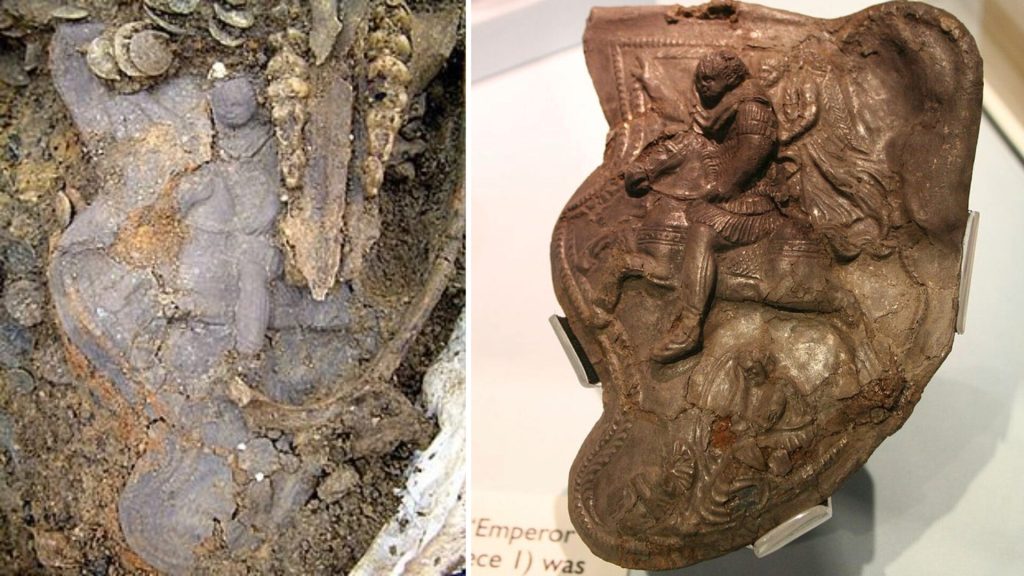
According to Adnan Qiblawi of Artnet, the various components of the helmet “include a bowl, seven cheekpieces, and various fragments, many of which were carefully decorated.” On the helmet’s brow guard, for example, there was the image of a goddess flanked by lions.
That’s a Lot of Cheekpieces
If you are thinking to yourself, “That’s a lot of cheekpieces,” you are right. It is! The reason for this is not known, but it is possible that the cheekpieces were interchangeable. The wearer could change out the pieces to fit the occasion.

The cheekpieces are all very elaborate. On five of them, equestrian scenes are depicted. One even shows a Roman on horseback as the goddess Victory places a laurel crown on his head. Beneath the horse’s hooves is the image of a barbarian being trampled. Experts believe this symbolized Rome’s defeat of the people of Britain.
A High-Status Object
Helen Sharp, the curator of archaeology at Leicestershire County Council’s museums, explained that the Hallaton Helmet is “one of a handful of silver-plated helmets ever found in Europe.”
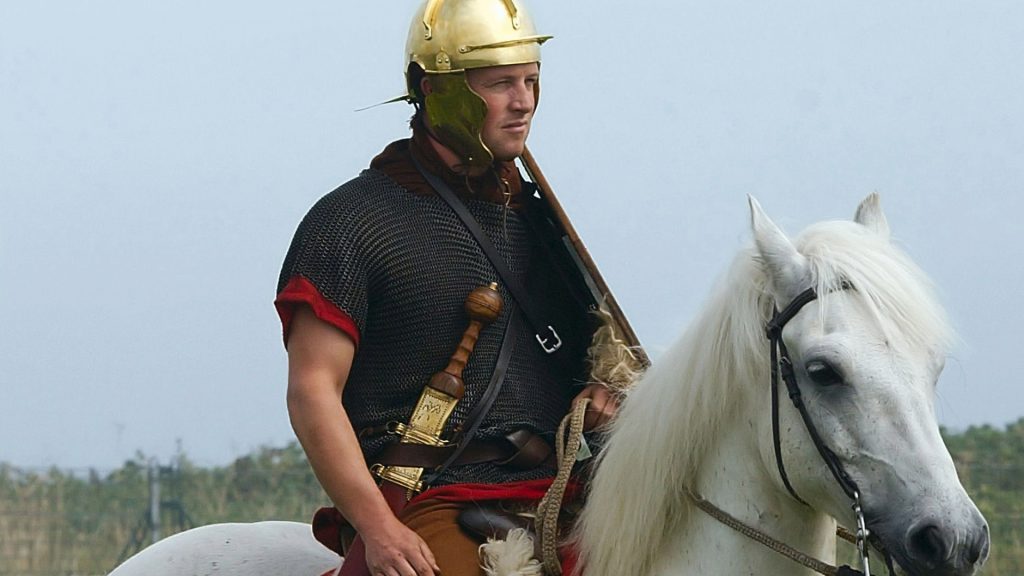
She added, “It is extremely high status: it would have been worn by an extremely high-status officer, and it just shows how well connected the Leicester area was at that time.”
A Pair of Replica Helmets
Two new additions have recently been added to the Hallaton Helmet display at Harborough Museum. Two replicas of the helmet have been made that give museum visitors an idea of what the helmet may have looked like when it was worn by a Roman officer.
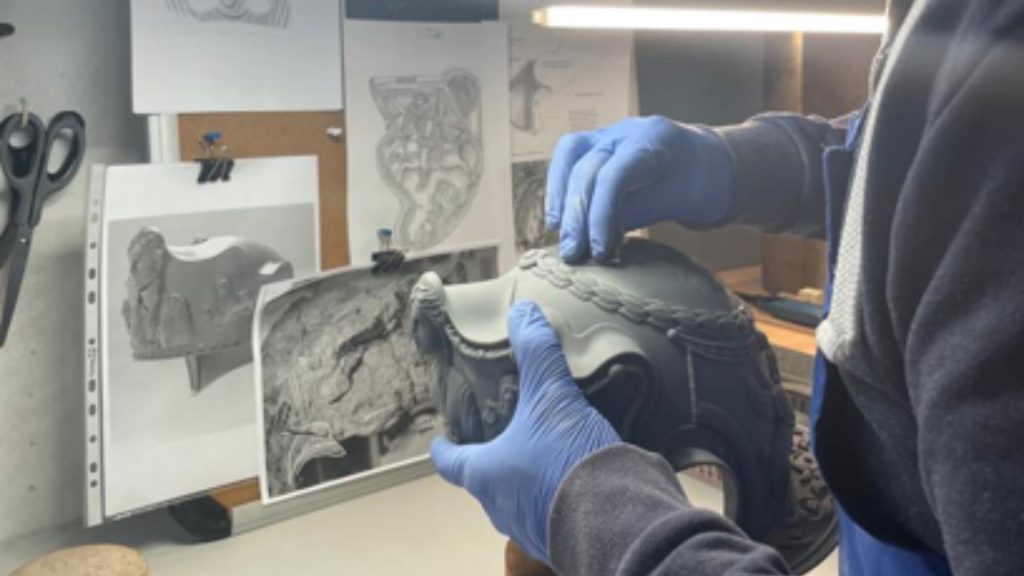
The first replica was created by a Leicestershire-based silversmith named Rajesh Gogna. Using scans of the helmet, Gogna was able to 3D-print a resin model of the helmet that he then decorated with silver and gold.
The Second Replica
Italian archaeologist Francesco Galluccio created the second replica of the Hallaton Helmet. Using traditional Roman methods, Galluccio handcrafted the replica based on the pieces that were recovered.
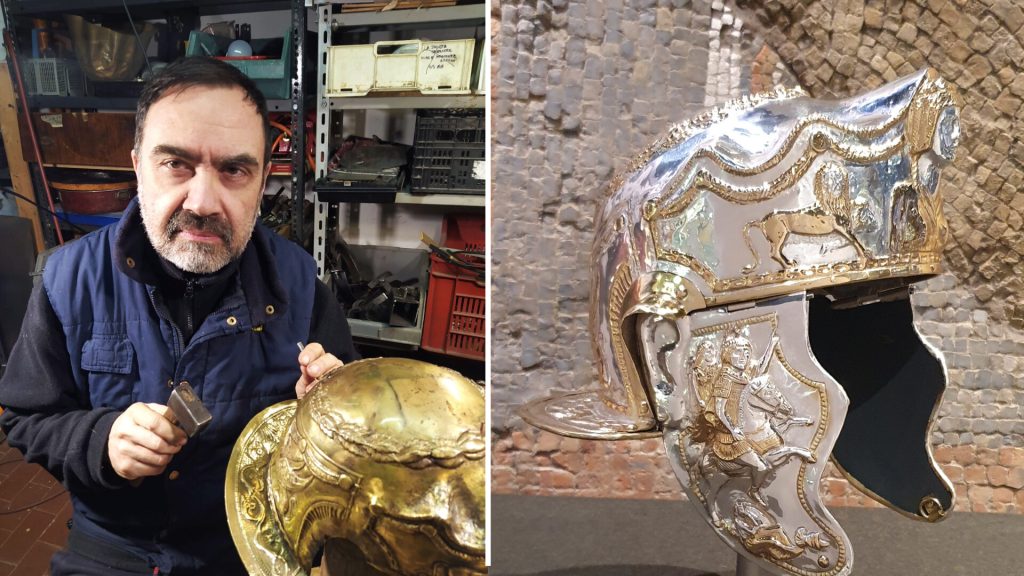
He explained, “The work started over a year ago and was carried out with intense and continuous collaboration with the museum’s management, succeeding in creating an incredible result.”
Together Again
Now that the Hallaton Helmet has been returned to Leicestershire County and the Harborough Museum is now in possession of all the artifacts discovered on the hillside, the county council has said, “The museum can now display all of the key finds from the collection together again for the first time.”
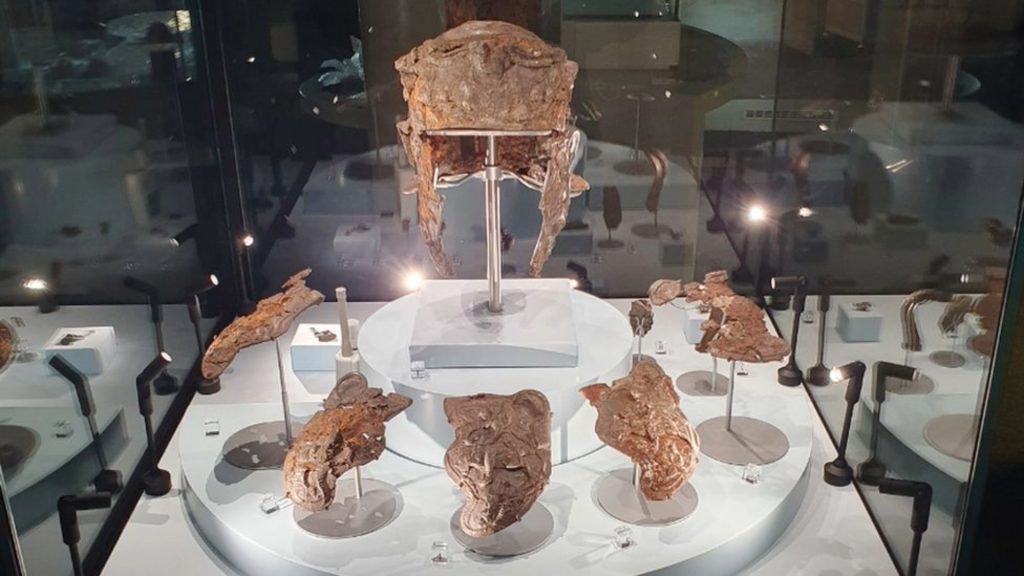
The “Hallaton Treasure” display includes the Hallaton Helmet, the two replica helmets, the silver bowl, and the trove of gold and silver coins. It offers visitors a glimpse into the time when the Romans ruled Britain.






